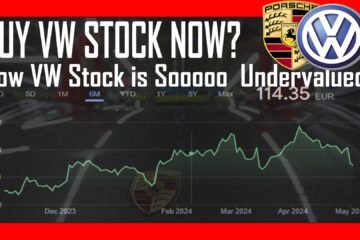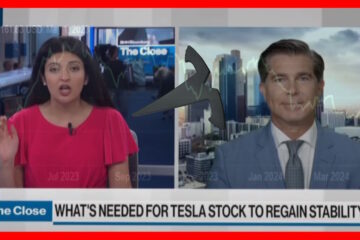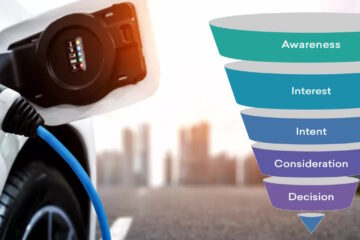In a word, China! And that exclamation is not accidental thanks to US government protectionism.
Many consumers are completely unaware of contract automotive manufacturing. They think that Mercedes builds all of its own vehicles and that startups will have to raise the enormous amounts of capital and then implement new factories. But the fact is Magna Steyer builds all of these well known vehicles today:
- Mercedes-Benz G-Class (and they are likely to produce the EV version of the G-Wagon next year)
- BMW 5 series (both the conventional and the hybrid version)
- Fisker Ocean EV
- BMW Z4
- Jaguar E-PACE
- Jaguar I-PACE electric vehicle
- Toyota GR Supra
They have produced 4 million vehicles so they know what they’re doing.
Magna is about to announce another contract car factory in north America. Magna is a $37 billion company with 170 employees spread across 342 manufacturing facilities in 27 countries.
The Taiwanese manufacturer of electronics, most notably the Apple iPhone, shocked the automotive world when it bought General Motors old production factory in Lordstown Ohio less than a year ago. People scoffed at the notion that even a massive consumer electronics company like Foxconn that specializes in televisions and small held hand electronics could make the leap to mass produce something as large as vehicles.
However, Foxconn is not stupid and when the US Government brought in a massive 27.5% import tax on vehicles made in China, the mathematics changed. Foxconn waited until the US government changed from Republican to Democrat and found that this tax was not repealed after it became apparent that American voters liked it.
In 2021 it became increasingly apparent that Lordstown Motors was in serious financial trouble and was almost certainly going to go bankrupt. Lordstown Motors was the EV startup that originally bought the GM factory in 2018 but did not manage to produce a single vehicle in it after millions of dollars in upgrades. Enter Foxconn. By the spring of 2022 they had struck a sweetheart deal to not only buy the factory but also start manufacturing Lordstown vehicles. This allows Foxconn to learn on the job with very small volumes right away.
However, Foxconn didn’t buy the Lordstown GM factory to produce Lordstown Motors pickup trucks. Foxconn bought Lordstown because it gave tariff free direct access to the US market, the Canadian market, the Mexican market, and to some parts of the European automotive market.
And how is Foxconn going to leverage that tariff free access? Two words, Chinese EV’s. Americans will not buy Chinese vehicle en-mass, but they will buy American made Chinese vehicles.
If you weren’t aware there’s already lots of Asian manufactured autos in the US Market and more are entering it right now:
- Three of the four Buick’s for sale in America today are made in Asia
- One of China’s most successful EV manufacturers, often referred to as China’s Tesla thanks to its raft of innovations and Elon Musk like brilliant leader, is named Nio and they and they announced they we’ll have product on sale in the United States by 2025.
- BYD will be the largest EV manufacturer in the world by the end of this year and they have announced they’re coming to the United States
- Geely will be coming to the United States through their Zeeker brand
- You are probably aren’t aware that Huawei, the Chinese cell phone and communications giant that was shut out of the US market, expanded into making cars and guess what the rumors are about which market they want to enter. Do you think Huawei branded vehicles would sell in the United States? I don’t think so either, so they won’t be. They’ll be American made with a completely unrelated name plate on the back.
China has about the same number of automotive startups as the rest of the world combined, with about 100 EV makers that need to grow and see great potential in Western markets.
The 27.5% Chinese car tariff makes it completely impractical to import any serious numbers of Chinese made cars, so how are they going to get around that tax, Magna Steyer and Foxconn, thats how.
Even without the 27.5% Chinese vehicle tariff it makes an awful lot of sense for startups and experience companies entering new markets like the United States to use a contract automotive manufacturer. It has been reported that Apple has been negotiating with Magna to produce the Applecar… if it ever gets built. Magna and Foxconn will strip away the complexity and startup costs, as well as provide domestic insights into country specific requirements.
That is why an American startup from Henrik Fisker chose Magna Steyer to produce their first SUV, the Fisker Ocean which by all accounts is a very high quality vehicle at a very attractive price. All that Fisker owns is the design and and the body stampings. Pretty much everything else is coming through Magna Steyer. Contract automotive manufacturing allows Henrik Fisker to call his firm the world’s first virtual car company.
The bottom line is Foxconn and Magna are going to have their success amplified several times over what they would have had thanks to an insanely large tariff. Magna and Foxconn dramatically decrease the barriers to entry in the Western automotive markets like the United States, Canada, Mexico.
At a time when there is serious talk from serious automotive analysts that juggernauts like General Motors, Ford, Chrysler (now Stalantis), BMW, Honda, Toyota and others may be bankrupt in 10 years, the long term future is looking extra bright for both Magna and Foxconn.



0 Comments